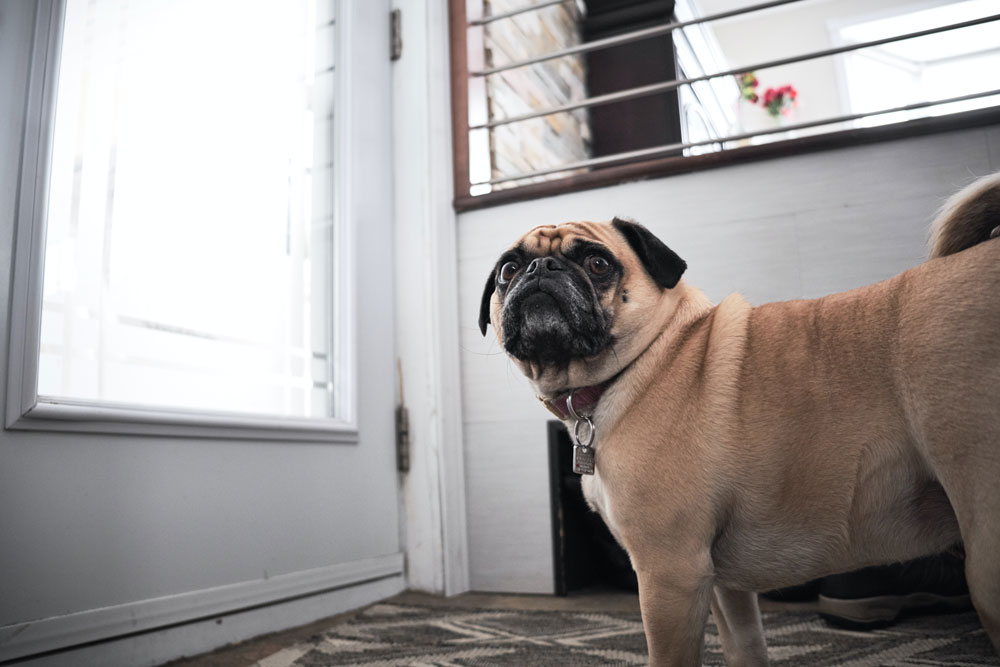
With restrictions easing across the nation, schools being re-opened and the ‘the new normal’ on the agenda, many owners are finding themselves having to once again leave their dogs at home for extended periods. A few months ago this was part of their routine but since you’ve been stuck at home due to restrictions your dog has adjusted to a new and (for them) glorious way of living. A way of living that meant LOTS of time with you – for most dogs, which thrive on companionship, it would have been an absolute highlight.
Dogs are great observers of their owners and they learn our behaviour by rite. That almost psychic ability we attribute to our dogs for pre-empting our behaviour is actually the result of constant surveillance by our four-legged companions. For the last couple of months, they’ve learnt a new behaviour and a brand new routine of you being at home. You heading back to work, out to the shops or visiting a friend, and not taking them along for the ride, will most likely result in separation anxiety on their behalf and, perhaps, pangs of guilt for you.
But it’s not all bad news. It’s time to get your pup used to the new-normal with our top 5 pro tips.
1. Exercise before leaving
Take your dog for a walk before leaving them, play a game of fetch or try a puzzle game that stimulates their minds. Tired dogs make happy dogs and they will be less stressed when you leave. The aim is to keep your dog too tired or too busy to be anxious while you’re gone.
2. Don’t encourage bad behaviour
Steadily we have begun anthropomorphising our pets – we’ve even started calling them ‘fur babies’. In some cases, this can escalate into over-indulgence which can be confusing to your pet and encourage bad behaviour. By creating and sticking to boundaries your dog will know their place in ‘the pack’. From an early age, you should aim to discipline your dog so that they know the rules. This includes when preparing them to be alone. As much as it hurts to leave your pet alone, ‘fussing’ over them when you leave will encourage bad behaviour in the long run. Make your comings and goings simple and opt for a no-fuss approach.
3. The “stay game,
This is a bit like exposure therapy. Dogs know your behavioural queues, but for dogs with separation anxiety, they start to feel nervous the second you grab your keys, put your shoes on and make moves to head out. The ‘stay game’ is basically when you start delivering the queues but don’t leave. Eventually, you’ll leave for a short while and then build up to longer periods. It’s a long process but one that over time your dog will come to accept and their anxiety will ease.
4. Aim for comfort
Your dog loves you and you no doubt try as much as you can to provide for their comfort. Leaving items that have your scent on them can help your dog relax and remind them that you will be coming back. Dirty laundry is great for this. You should also remove any stress triggers – some owners swear by hiding treats around the house so that their pet can get distracted and stay entertained.
5. Anxiety treats, toys and noise
There is a range of over the counter calming treats that can calm your pet. These may be worth a try but please be mindful of all ingredients. Alternatively, a good entertaining toy with some hard to get treats hidden inside can keep your dog entertained for hours and provide a healthy distraction while you are away. In addition, studies have demonstrated that leaving ‘talk’ radio and audiobooks on during the day can be very calming.
Lastly, as something to consider, ask yourself can you take your dog with you? Many workplaces have begun to be more flexible in this regard and there are of course benefits to taking your dog to work – fun for everyone!
If you’re looking to give them something to help ease that transition some Dig-In certainly wouldn’t go amiss. View our products – here.
Resources:
https://www.cesarsway.com/6-tips-to-help-dog-separation-anxiety/
https://petcube.com/blog/how-to-ease-dogs-separation-anxiety/
https://pets.webmd.com/dogs-separation-anxiety#1





